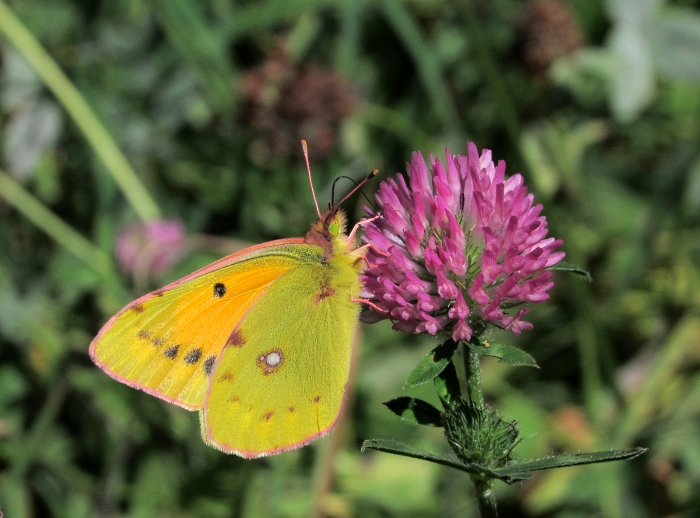
Migrant male on the Suffolk coast, UK, September 2013

Male, showing upperside in flight, Málaga, August 2020

Female, Switzerland, October 2017

Male, Switzerland, October 2016
Colias crocea
Refresh page if pictures don't load fully:

Migrant male on the Suffolk coast, UK, September 2013

Male, showing upperside in flight, Málaga, August 2020

Female, Switzerland, October 2017

Male, Switzerland, October 2016

Male, Switzerland, December 2013

Mating pair, Switzerland, October 2013

Female, form helice,
Málaga, April 2019

Female form helice,
Spain,
July 2017

Female form helice,
Suffolk
UK, August 2016

Female form helice,
Switzerland, September 2013

Female, Switzerland, 2007


Switzerland, February 2007. Female of the white form, helice.

Switzerland, November 2009, female helice

Switzerland, October 2009, female helice

Eggs, Switzerland, October 2012

Eggs, Switzerland, October 2012

Approximate distribution. Deep orange represents resident
range,
pale orange migrant range. May persist as temporary resident well
north of permanent resident range.
This
lovely butterfly is a familiar sight in most of Europe, including the
south of Britain. In most places, though, it cannot survive the winter
and is present only as a migrant. For that reason its numbers vary
enormously from year to year. In Switzerland, for example, it may be
relatively scarce some years and abundant in others. It appears to be
able to survive the winter in the Rhône Valley in favourable seasons,
but certainly not every year. Because the species has no true diapause,
it may be found in winter in any stage from egg to adult. I have seen
adults well into December and apparently freshly emerged ones in
January. The most viable state for successfully passing the winter is
probably as a larva, with the option of going torpid during cold spells
and feeding up slowly at other times.
In most of Europe the deep
yellow
colouration is sufficient to identify normal adults. The unspotted dark
border of the male, often crossed by fine yellow lines along the veins,
is also characteristic. A varying percentage of females present as form
helice,
which is white on the
upperside with a rather greenish underside hindwing and a white
underside forewing - sometimes with just a dash of yellow in the cell
area. This form can be confused with the females of pale clouded and
Berger's clouded yellows but a glimpse of the upperside, even in
flight, is sufficient to identify it. The submarginal white spots on
the forewing of the female clouded yellow are all completely contained
in the dark band, not bursting out of it towards the trailing edge as
in those other species. In the eastern Europe and the Balkans there are
three other clouded yellows with deep orange, rather than yellow wings:
the Greek clouded yellow (Colias
aurorina), the Danube clouded yellow (Colias myrmidone)
and the Balkan
clouded yellow (Colias
caucasica).
All three have white female forms corresponding to helice
of the clouded yelllow. Males and 'normal' females are rather deeper in
tone than clouded yellows. In addition, the male Greek clouded yellow
(found only in Greece) has characteristic purplish reflections on the
upperside.
Clouded yellow larvae feed on
a wide
variety of peas and vetches but in my experience migrant individuals
are particularly drawn to clover fields and this is where I
predominantly look for them in the UK.